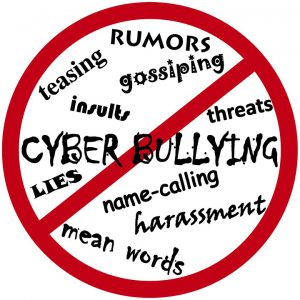[profileleft] [/profileleft]Chances are that nearly every child has a cyber bully in his or her life, whether that child knows it or not. Until relatively recently, society had not learned very much about the nature of the cyber bully, as this form of bullying only became prevalent with the growth of the Internet. More and more professionals are digging into this problem. They appear to be learning valuable lessons. One of those lessons identified by several studies involves the depth and scope of this serious issue. A recent study that focused on young people in New York showed just how many people had run into at least one cyber bully while online. Perhaps as more people learn about how every child is at risk for this type of suffering, more people will take steps to protect their own children.
[/profileleft]Chances are that nearly every child has a cyber bully in his or her life, whether that child knows it or not. Until relatively recently, society had not learned very much about the nature of the cyber bully, as this form of bullying only became prevalent with the growth of the Internet. More and more professionals are digging into this problem. They appear to be learning valuable lessons. One of those lessons identified by several studies involves the depth and scope of this serious issue. A recent study that focused on young people in New York showed just how many people had run into at least one cyber bully while online. Perhaps as more people learn about how every child is at risk for this type of suffering, more people will take steps to protect their own children.
About the Cyberbullying Study
Researchers from Siena College Research Institute, AT&T and the Tyler Clementi Foundation collaborated on the study. Those interested in reading a description of the research can find it here. The researchers conducted 1,255 online interviews with students between grades 6 and 12 across Western and Upstate New York. They also interviewed 1,048 parents of students from schools that were participating in the survey.
The researchers found the following:
- 26 percent of the student respondents from Upstate New York had been cyberbullied.
- 55 percent of teens in Western New York had witnessed cyberbullying.
- More than half of the parents in Western New York had witnessed cyberbullying.
- More than 20 percent of Western New York teens witness cyberbullying at least a few times per month.
The study found the following with regards to teens who had run into at least one cyber bully:
- Nearly 33 percent of teens ‘laughed it off’ when they saw something negative posted about them online.
- 9 percent of teens cried when they saw something negative online about them or someone close to them.
- 41 percent of teens who had dealt with a cyber bully told a friend about it afterward.
- 48 percent of cyberbullied teens spoke to their parents.
- One-third of those teens targeted ultimately confronted the alleged cyber bully.
- 20 percent of bullied teens told school officials about it.
Cyberbullying Defined
For purposes of this study, the researchers defined cyberbullying as posting any or all of the following online:
- Insulting comments
- Threatening comments
- Pictures meant to embarrass
- Revealing videos
- Rumors
- Allegations regarding sexual activity
StopBullying.gov identifies cyberbullying as, “bullying that takes place using electronic technology. Electronic technology includes devices and equipment such as cell phones, computers, and tablets as well as communication tools including social media sites, text messages, chat, and websites.” The same organization defines bullying as, “unwanted, aggressive behavior among school aged children that involves a real or perceived power imbalance. The behavior is repeated, or has the potential to be repeated, over time. Bullying includes actions such as making threats, spreading rumors, attacking someone physically or verbally, and excluding someone from a group on purpose.”
About the Cyber Bully
The study also looked closely at the nature of the cyber bully. Those who responded to the survey and admitted to acting as a cyber bully in the past gave the following reasons for acting in this manner:
- They wanted to get back at someone.
- They were angry at someone or about something.
- The cyber bullies simply thought that what they posted was funny.
In addition to the motivation for cyberbullying, those who engaged in this conduct listed the following reasons that they attacked another person online:
- 39 percent attacked physical appearance.
- 27 percent made fun of the target’s social awkwardness.
- 28 percent cyberbullied because they thought their target was gay.
- 25 percent attacked another person because of the clothes they wear.
- 25 percent of cyber bullies attacked others for having some sort of disability.
- 22 percent of cyber bullies attacked others for lack of athletic ability.
- 14 percent of online bullies attacked others for being sexually active.
The study also revealed that a cyber bully is not necessarily unaware of the harm that he or she inflicts on others with this conduct. According to the survey:
- 12 percent of teens posted something online that they regret.
- 6 percent of cyber bullies had posted something that eventually hurt someone.
- 2 percent of teens posted something they were ashamed of that was still available online.
How Teens Become Targets
Additionally, the study reveals just how vulnerable teens may be to any cyber bully based simply on the amount of time that an average teen spends online. According to the researchers:
- 91 percent of the teens stated that they spend more than an hour online every day playing videos or video games.
- 79 percent of the respondents spend at least an hour every day online socializing with their friends.
- 82 percent of teens have their own smartphones.
- Nearly one-third of the teens had shared their name and gender to someone they only knew online.
- 5 percent had agreed to meet someone they had met only on the Internet.
Cyberbullying and Parents
The study also reveals that the parents who were interviewed as part of this process seem to be more aware of and involved with preventing cyberbullying than what others studies have shown. We discussed one such study here that showed a surprisingly low number of parents who thought that cyberbullying was a concern of theirs. In this study, parents stated the following:
- Nearly all parents had spoken to their children about cyberbullying.
- 97 percent of parents stated that they have taught their children not to reveal personal information online.
- 40 percent of the parents have technology-related rules that they strictly enforce.
- 47 percent have rules in place but do not enforce them.
- 13 percent of parents allow their children to make their own decisions regarding online behavior.
How Children’s Rights Lawyers Can Help
This research may focus on young people and their parents in New York, but it’s safe to say that surveys from other parts of the United States would likely lead to somewhat similar results. If you believe that your child is acting as a cyber bully, you need to put a stop to it as soon as possible. You also need to take steps to restore your child’s dignity, pride and sense of safety if your child has been bullied online. If you need specific help that you’re not getting, contact the children’s rights lawyers at Gomez Trial Attorneys today for a free case evaluation.







